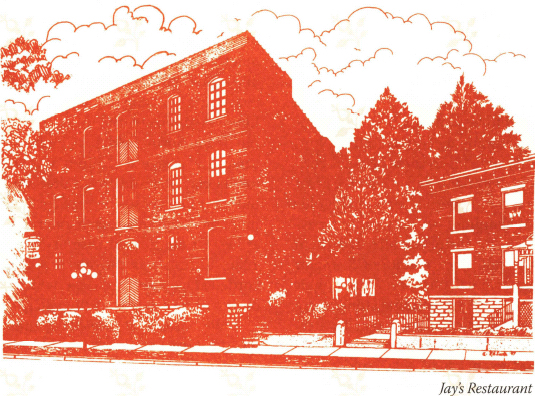

In Titus Andronicus, Shakespeare penned, “More water glideth by the mill than wots the miller of.” Early communities frequently developed along water sources for just that reason. After the general store, the mill was one of the businesses most essential to settlers. Gristmills ground farmers’ crops into various food products. And the presence of a gristmill encouraged further settlement. Lumbermills soon followed, supplying lumber for construction. Some of the mills featured here are still in operation, and all satisfy the needs of modern citizens by serving up good meals.
75 WATER STREET
CLIFTON, OH 45316
937-767-5501
There used to be almost a hundred thousand mills operating in this country. Now, fewer than fifty are still in their original condition. Antonio Satariano Sr. and Jr. take great pride in being the owners of one of the oldest of those remaining few. They share a passion for preserving history, which led them to return their mill from a state of disrepair in 1988 to its original purpose. Under their supervision, the original grinding stones were reinstalled and a replica of the original water-wheel was constructed. They repaired floors and walls and even added a covered porch from which to view the waterfall that drops to the Little Miami River.
We sat in the Millrace Restaurant, one of the two dining rooms in The Clifton Mill. The view from atop the gorge is spectacular, even more so in winter, when every inch of the mill and the gorge below is covered with 2.5 million lights. The restaurant is located in the old storage and storefront part of the building. It is full of interesting photographs of the village of Clifton, mill memorabilia (including a fabulous collection of old flour bags), and wooden tables and chairs. It is easy to be transported back in time. The cooking is home-style. Whole-grain breads, pies, and cookies are baked daily.
Built in 1802 and originally named after its owner, Owen Davis, this is one of the largest water-powered gristmills still in operation. The old Davis Mill was owned and operated by many different families over the years as it quietly provided a backdrop to history itself. The whole village is historic. The Old Stagecoach Inn—a stop on the Accommodation Line—is opposite the mill. The stagecoach ran from Springfield to Cincinnati. At that time, the village of Clifton was well known for its clay soil and freshwater springs. During the rainy season, boggy roads were common, making stagecoach operation difficult at best. It did not surprise us to learn that in 1836, Clifton was the site of Ohio’s first recorded stagecoach accident, which took place on the northern side of the village.
We visited at breakfast time to sample the famous Pancakes, made from grain ground on the premises. Opting for the Mill-race Breakfast Combo—which includes Buttermilk, Cornmeal, and Buckwheat pancakes, served with a side of Sausage—we chatted with Antonio Jr. as we ate. He told us that the mill endeavors to support the local community in its purchases for the restaurant. To that end, it buys ostrich from a local ostrich farm. Hogs raised at another local farm are used in the mill’s Whole-Hog Sausages—and jolly delicious they are, too!
There is much history to see here, both at the mill and in the village. We knew we would have to return another day for a more leisurely walk down to the narrows, where famous Indian scout Cornelius Darnell is supposed to have leapt over the gorge to escape pursuing braves. In the meantime, supporting local farmers with every mouthful, we settled down to clean our plates!

 ARTISTS’ SUGAR MAPLE
ARTISTS’ SUGAR MAPLE 
THREE-LAYER CORNBREAD
1 cup cornmeal
½ cup whole hard wheat bread flour
½ cup white flour
2 teaspoons baking powder
½ teaspoon sea salt
1 brown egg, well beaten
¼ to ½ cup molasses or honey
¼ cup vegetable oil
3 cups milk or buttermilk
Preheat oven to 350 degrees. In a large bowl, mix together all dry ingredients. In a medium bowl, combine all wet ingredients. Pour wet ingredients into the large bowl and combine thoroughly with dry ingredients; mixture will be very liquid. Grease a 9-by-9-inch pan and pour in batter. Bake for approximately 50 minutes. Serves 10 to 12.
 APPLE FARM BREAD
APPLE FARM BREAD 
2 packages dry yeast
½ cup lukewarm water
1½ teaspoons salt
1 tablespoon pasteurized honey
1 tablespoon maple syrup
 cup vegetable shortening, softened
cup vegetable shortening, softened
½ teaspoon cinnamon
1 cups hot water
cups hot water
1¼ cups applesauce (not chunky)
 cup powdered milk
cup powdered milk
5 cups all-purpose flour
2 cups whole-wheat flour
In a small bowl, dissolve yeast in lukewarm water. Set aside to activate. In a large mixing bowl, combine salt, honey, syrup, shortening, cinnamon, and hot water. Mix thoroughly. Gradually stir in applesauce, then powdered milk. Add dissolved yeast and mix well. Stir in flours a cup at a time until dough is stiff but not tacky.
Lightly flour a breadboard and knead dough for at least 10 minutes. Place dough in a lightly greased bowl and cover with a moist cloth. Put bowl in a warm place and let dough rise for approximately 1 hour until it doubles in size.
Preheat oven to 400 degrees. Uncover and punch dough down. Cut dough in half and place each half in a lightly greased 9-by-5-inch loaf pan. Let pans stand for 30 minutes to allow dough to rise again. Bake for 45 minutes. Yields 2 loaves.
1995 BROADWAY AVENUE
STOCKPORT, OH 43787
740-559-2822
The only remaining hand-operated lock system in the United States is here on the Muskingum River in Stockport. The influence of Lock #6 has been felt both in the community and in the Stockport Mill Inn. The mill’s original twin Leffel turbines powered both the mill and the village streetlights in the 1920s. During our initial visit, we were shown the papers certifying government approval for the mill to again generate its own power. What’s old is now new again.
The day we visited, we shared the dining room with the Hook family, descendants of Captain Isaac Newton Hook, a Muskingum riverboat pilot. He died in 1906, the year the current mill was built. But he was around to see the first mill here, built in 1842 and then rebuilt in 1849 after a fire destroyed the original. After operating for fifty-four years, the rebuilt structure also burned down.
When the Dover brothers put up the current building in 1906, a young lad by the name of Fred James declared it to be “plenty sturdy.” Its sturdiness passed muster, as it withstood not only the 1913 flood but all subsequent floods as well. It remains the only surviving mill on the Muskingum River. Fred James and Ray Devitt eventually bought the mill and then sold it to the Farm Bureau. In 1979, the operation was taken over by Robert and Jack Grove. During their tenure, the mill was involved in many 4-H projects. This venture lasted for almost twenty years, until the doors closed in 1997. They didn’t stay that way for long.
In August 1998, Laura and Randy Smith were on a motorcycle ride, pursuing Randy’s hobby of collecting antique autos. What they ended up with was an antique mill instead. During the renovation, the couple used as much of the mill and its machinery as possible. The original flooring, hand-hewn beams, gears, and grain bins were left exposed. Rather than being painted or stained, one wall is covered with slate tiles once used as roofing. Each of the lovely guest rooms upstairs is named for a significant part of the area’s past, highlighting the connections between the mill’s history and Stockport’s legacy.
As we sat at a table with a picturesque view of the river and the locks, we were very glad the Smiths had taken that fateful motorcycle ride, and additionally glad that Dottie Singer is currently at the helm and is continuing to maintain what began more than one hundred years ago. The current menu features New York Strip Steak, Baby Back Ribs, and Southwestern Chicken. The freshest locally produced ingredients are used in season. Homemade breads, pies, and desserts are served. The popular Sunday buffet features Oven-Fried Chicken, homemade Noodles, Beef Pot Roast, and warm Fruit Cobbler. Wanting to linger awhile longer after a fulfilling meal, we decided to share dessert, hoping to catch a glimpse of one of the American bald eagles that have nested near the mill.

 MUSKINGUM RIVER
MUSKINGUM RIVER 
BROWNIES
1 box German chocolate cake mix
 cup evaporated milk, divided
cup evaporated milk, divided
¾ cup melted margarine
1 cup pecans, chopped
14-ounce package Kraft caramels
12-ounce package chocolate chips
Preheat oven to 350 degrees. Combine cake mix,  cup evaporated milk, margarine, and nuts. Pat half of mixture into a 9-by-13-inch pan. Bake for 6 to 8 minutes. Combine caramels and remaining
cup evaporated milk, margarine, and nuts. Pat half of mixture into a 9-by-13-inch pan. Bake for 6 to 8 minutes. Combine caramels and remaining  cup evaporated milk in a saucepan on low heat. Cook until melted and smooth. Remove from heat. Sprinkle partially baked brownies with chocolate chips. Pour caramel mixture slowly over chips. Drop remaining cake mixture over top. Bake an additional 15 to 20 minutes. Serves 8 to 10.
cup evaporated milk in a saucepan on low heat. Cook until melted and smooth. Remove from heat. Sprinkle partially baked brownies with chocolate chips. Pour caramel mixture slowly over chips. Drop remaining cake mixture over top. Bake an additional 15 to 20 minutes. Serves 8 to 10.
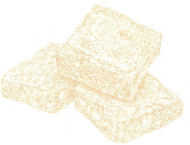
 MORGAN COUNTY CAVIAR
MORGAN COUNTY CAVIAR 
15-ounce can shoepeg corn
15-ounce can yellow corn niblets
15-ounce can black-eyed peas
15-ounce can black beans
15-ounce can black olives
4-ounce can jalapeño peppers (optional)
4-ounce can diced green chile peppers
1 medium tomato, diced
4 green onions with tops, thinly sliced
1 medium green pepper, diced
1 teaspoon minced garlic
1 cup Italian dressing
Drain canned ingredients while chopping vegetables. Add chopped vegetables and garlic to drained canned ingredients. Drizzle with Italian dressing and toss. May be refrigerated for 5 to 7 days. Serve as a dip with tortilla chops or in lettuce cups as a salad course. Yields 6 cups.
225 EAST SIXTH STREET
DAYTON, OH 45402
937-222-2892
When we arrived at Jay’s at seven-thirty on a Thursday evening, it was packed. Those waiting assured us that it was definitely worth the delay. How very true that was. Jay’s Restaurant was unveiled in 1976 and quickly became renowned for its wine list and its seafood. The wine list reads like poetry, and Karen enjoyed perusing it thoroughly. It is so comprehensive that it even has several pages at the front explaining the different types of wine, for those unsure of exactly what they should select. There are also maps with descriptions of various wine regions, all there for customers’ education. On Fridays and Saturdays, bottles of wine are available for sale from the restaurant. Five different bottles are opened each of those days for customers to sample and purchase. The approach reflects owner Jay Haverstick’s passion for excellent wine.
This excellence is reflected in the seafood as well. Seven or eight selections are available baked, char-grilled, or blackened. Monkfish, Tuna, Swordfish, Salmon, Halibut, Scrod, and Lake Erie Walleye were among the choices the night we dined. For landlubbers, there are chicken and steak options, but Jay’s and seafood really are synonymous. We opted for the Crab Cakes, which were fabulous. They had tiny bits of red cabbage and red pepper mixed in, which added an interesting texture and just a bit of flavor. The cakes were served with Remoulade Sauce and Asian Vinaigrette. Debbie preferred the rich ginger flavor of the Asian sauce, although both were excellent. For dessert, Karen was tempted by the Chocolate Coffee Torte, but we ended up sharing a piece of Jay’s famous Lemon Sour Cream Pie. Both of us delighted in the light, not-too-sweet finish to our meal.
Jay’s Restaurant is located in the Joseph Kratochwill Dayton Corn and Grist Mill, built in the 1850s on the bank of the Miami-Erie Canal. At one time, this mill provided Dayton and much of the Midwest with the Snow Flakes and New Process brands of flour, which were well known for their outstanding purity and fineness. The latter half of the 1900s was a prosperous time for Dayton’s Oregon District. Commercial and residential development here left an architectural legacy unparalleled in the city. Visitors to the district—which is Dayton’s oldest neighborhood—can still see the mansions of the wealthy standing among the simpler homes of laborers and craftsmen.
The interior of the restaurant is appealing in its simplicity. The brick walls of the old mill stand fairly unadorned. The beautiful light fixtures are of the time period of the mill’s construction, and the railings were saved from the Old Xenia Hotel. In one corner of the room is an enormous fifty-four-hundred-pound Honduran mahogany back-bar. It was commissioned for the opening of the Pony House Restaurant, an establishment where John Dillinger was a regular and where Buffalo Bill Cody is said to have ridden his horse right up to the bar! The bar serves a slightly more refined clientele today, but Jay’s is popular with just about everyone, so you never know whom you might see!

 SEARED TUNA
SEARED TUNA 
2 4-ounce Ahi tuna steaks
2 tablespoons wasabi paste
¼ cup black sesame seeds
2 tablespoons canola oil
2 cups seaweed salad or other greens of choice
2 radishes, thinly sliced
½ cup Sweet Chili-Soy Ginger Sauce (see next column)
handful of fried won tons
Coat tuna steaks with wasabi paste, then dredge in black sesame seeds. Heat oil in a large sauté pan. Sear tuna on each side for 2 minutes. Place steaks on a cutting board and thinly slice. Divide salad greens and place in center of 2 plates. Fan each tuna steak around greens. Place radishes around tuna. Top tuna with Sweet Chili-Soy Ginger Sauce. Place fried won tons on top of greens. Serves 2.
 SWEET CHILI-SOY
SWEET CHILI-SOY 
GINGER SAUCE
1 cup light soy sauce
½ cup sweet chili sauce
2 teaspoons freshly grated ginger
1 tablespoon honey
Place all ingredients into a small bowl and whisk together to blend. Place in a sealed container in refrigerator for at least 1 hour to allow flavors to combine. Yields approximately 2 cups.
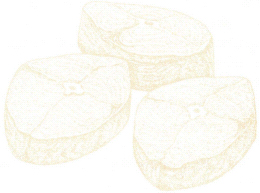
PEERLESS MILL INN
319 SOUTH SECOND STREET
MIAMISBURG, OH 45342
937-866-5968
Once a water-powered lumbermill on the bank of the Miami-Erie Canal, this charming inn is an ideal choice whether you’re dining with a large group of friends or seeking a romantic dinner for two. The rustic hand-hewn timbers and enormous beams of dark wood give the six dining rooms and tavern a cozy, intimate feel. The large wood-burning fireplaces in most of the rooms and the flagstone floors enhance the historic ambiance, as do the wrought-iron chandeliers and the pewter chargers. Floral tablecloths and the assorted pieces of artwork adorning the walls lend a touch of warmth.
A favorite gathering place for the townsfolk, it was fairly full on the day we visited. The menu selections all looked good, from the Seafood Casserole Gratinée to the Lemon Pepper Marinated Roast Pork Loin. We opted for the Peerless Mill Inn’s signature Seven-Layer Mill Salad and a homemade loaf of Bread. Debbie enjoyed her Veal Piccata with Lemon Cilantro Butter, while Karen savored the Roast Duckling with Cranberry Orange Glaze. The homemade desserts all sounded as wonderful as the entrées. Hot Peach Crisp à la Mode topped Karen’s list, with Black Bottom Pecan Pie running a close second. It was a leisurely meal orchestrated by an attentive staff. We had plenty of time to investigate the small wooden curio boxes around the room, each filled with antique glassware and china.
Built in 1828, the lumbermill sat side by side with a gristmill. The Miami-Erie Canal had just been built, and the mills—locally known as the Great Peerless Mills—made a substantial contribution to the local economy. Named for the Miami tribe of Indians, who once roamed the local hills, Miamisburg was a growing village and a small but important center for cultivating tobacco. Wheel and carriage factories, binderies, and paper making were among the local industries.
The sawmill was powered by a large overshot waterwheel turned by the waters of the canal. Giant logs were dragged in from nearby woodlands and turned into beams and planks. Over the next seventy years, a city built from the products of the sawmill grew. The gristmill also prospered, wagons continuously passing through to pick up meal or flour. In 1938, the gristmill closed its doors for the last time, and the building was destroyed. Visitors now park their cars on what was once the site of that picturesque structure. The lumber-mill was converted into a restaurant called the Peerless Pantry. That prosperous business was eventually renamed the Peerless Mill Inn. Today, the inn is proud to be called a living part of the history of Miamisburg.
1 cup chopped onions
2¼ cups cream
1 tablespoon butter
1 tablespoon flour
salt and pepper to taste
4 4-ounce beef fillets
4 toast rounds
4 slices ham
2 ounces Gruyère cheese, grated
In a medium pan, simmer onions in cream. In a second pan, melt butter and stir in flour. Cook over medium heat for 1 minute. Add onion mixture and cook until thickened. Add salt and pepper.
Broil or pan-fry fillets to desired doneness. Place on toast rounds and top with onion sauce, ham, and cheese. Place under broiler for about 30 seconds until cheese is melted. Serves 2.
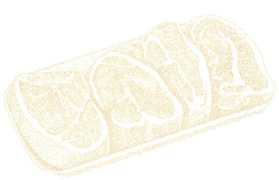
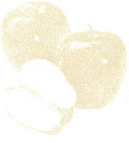
 APPLE DUMPLING CAKE
APPLE DUMPLING CAKE 
1½ cups oil
2 cups sugar
3 eggs
2 teaspoons vanilla
3 cups flour
1 teaspoon salt
1 teaspoon baking soda
1 teaspoon cinnamon
3 cups diced apples, skin on
1 cup nuts
1 cup brown sugar
1 stick butter, softened
¼ cup milk
Preheat oven to 350 degrees. In a large bowl, combine oil, sugar, eggs, and vanilla. Add flour, salt, baking soda, and cinnamon and stir to combine. Add apples and nuts. Stir mixture well and pour into a Bundt pan or an 8-by-12-inch cake pan. Bake for 1 hour.
In a small bowl, combine brown sugar, butter, and milk. Pour mixture over top of cake as soon as it is removed from oven. Let set for at least 1½ hours before removing cake from pan. Serves 12.
403 SOUTH BROADWAY
GENEVA, OH 44041
440-466-5560
As you drive on State Route 534, you can’t miss the freshly painted barn-red buildings highlighted in crisp white trim that comprise the Old Mill Winery. We arrived after a long day on the road, so the casual, laid-back atmosphere was quite welcome. Tables for four provided ample seating throughout the spacious interior of this old feed mill. The original wooden floor echoed with a warm resonance as guests moseyed up to the bar to get a drink or order a bite to eat.
We opted for one of the Wednesday-night specials, steamed Peel-and-Eat Shrimp, served in a basket with Red Potatoes, Corn on the Cob, and Garlic Bread. As our food was being prepared, we wandered through the interior, looking at the antique cash registers, stoves, trunks, and wooden buckets. We even discovered the Christmas bell that helped dress the holiday windows at Macy’s Department Store in downtown Cleveland during the early 1900s.
The J. E. Goodrich family started a milling business in this building sometime in the early 1860s. The plastered and wallpapered rooms on three floors at the back of the structure probably functioned as the Goodrich residence. During the early 1900s, the mill was owned by George Brown, and then by Farmer’s Supply Corporation. In 1937, General Mills took over the operation, using the mill to turn out ingredients for its wide array of products. All in all, the mill supplied the needs of the area for almost one hundred years.
At the time the mill was constructed, Ohio led the nation in the production of wines. Mr. and Mrs. Richard Kinkopf converted the mill into a winery in 1980, recapturing a piece of Ohio’s history. Paul Cantwell and Alan and Joanne Schnider became subsequent owners. The Schniders bought the business to provide money for a unique spiritual concept they call their “Faith Foundation.” The Old Mill Winery has sixteen wines on its list, including Geneva Blanc, a fruity, semisweet wine excellent for Sangria Coolers, and Grindstone White, a sweet dessert wine made from popular native Niagara grapes and similar in flavor to French Sauternes. In addition, the mill produces and bottles altar wines for church consumption in the Cleveland and Akron Catholic Diocese. A real highlight for the establishment came when Mrs. Schnider had the opportunity to offer a bottle of Old Mill wine to the pope!
Many people ask how the Old Mill Winery can offer home-style meals at such bargain prices. Whether you go on Tuesday for Soup Night, visit on Thursday for Pasta Night, or order off the menu, the price is definitely right. The Schniders’ philosophy is to “tempt them with food and keep them with wine and great entertainment.” Everything from Irish folk music to classic rock can be heard. Sunday is the night when local performers (sometimes after a glass or two of wine) are encouraged to take center stage. But any night of the week, fun is on the menu!

 MEAT LOAF
MEAT LOAF 
2 pounds freshly ground sirloin
2 pounds freshly ground pork
2 cups fresh breadcrumbs
1 large green pepper, finely diced
1 large red pepper, finely diced
2 cups marinara sauce
2 teaspoons pepper
2 teaspoons granulated garlic
1 tablespoon chopped fresh parsley
½ cup sweet red wine
4 large eggs
1 large onion, finely diced
Preheat oven to 350 degrees. Mix together all ingredients in a large bowl, kneading until thoroughly blended. Form into 4 small loaves and place in a shallow baking pan. Bake for 45 minutes to 1 hour until centers are 155 degrees. Serves 10 to 12.
 CHAMBOURGIN DRESSING
CHAMBOURGIN DRESSING 
½ cup sugar
1½ cups oil
½ cup Chambourgin wine or other dry red wine
1 cup balsamic vinegar
1 teaspoon granulated garlic
1 teaspoon pepper
½ teaspoon basil
1 tablespoon salt
Combine all ingredients with a whisk in a large bowl. Store in an airtight container in the refrigerator. Yields approximately 3 cups.
 ALFREDO SAUCE
ALFREDO SAUCE 
2 cups heavy cream
½ cup Chablis
1 teaspoon chopped fresh basil
1 teaspoon chopped garlic
1 teaspoon chopped fresh parsley
1 cup grated Romano cheese
salt to taste
3 egg yolks
In a medium saucepan, heat heavy cream slowly. Do not boil. Gradually add next 6 ingredients, whisking well. When cheese is just about completely melted, slowly whisk in egg yolks. Yields approximately 4 cups.
255 RIVERSIDE DRIVE
TIFFIN, OH 44883
419-448-0100
The Sandusky River, source of power for the Pioneer Mill, is one of only a handful of rivers in the world to flow northward. We were seated in the main dining room, called the Millstone Room, at a table overlooking the water. The large, deep-set windows provided an ample view of the property and the river. Intrigued by the items adorning the walls, we wandered, as we are prone to do. Our most interesting discovery was the “swing sifter,” a type of elevator in which small buckets were attached to a four-inch-wide cotton belt. The belt stretched from the basement to the third floor. The small containers on the belt would pick up grain and carry it upward, where it would be ground into flour, bran, or middling. We also enjoyed the printed quotations and bits of information about the mill’s history displayed throughout the building. Two large metal drive wheels located in the basement were put in place shortly before the mill closed in 1951. The electricity generated by one of those wheels is enough to supply power for heat for the entire winter to the house across the street from the mill. During a power outage, the restaurant can obtain enough juice from the other wheel to continue operating. The metal wheels replaced the wooden handcrafted drive wheels that supplied the power for most of the mill’s history. Today, the wooden wheels are displayed throughout the restaurant. Many are now in service as unique chandeliers.
Josiah Hedges, founder of the town of Tiffin, built the mill. Begun in 1822, construction of the frame building and the raceway took two years to complete. When fire destroyed much of this flour mill and gristmill in 1875, it was rebuilt using brick. But that was not to be the only disaster facing the mill. In 1913, the town of Tiffin was devastated by a flood. As the waters receded, a two-acre island comprised of debris, primarily bricks and stones, was formed beside the mill. Today, bits and pieces of brick can still be seen on the island. In 1937, a disastrous fire swept through the building. Charring is visible on many of the heavy wooden posts and beams that still support the structure.
On the day we visited, the luncheon buffet was a popular choice with many diners. It featured Tomato Bisque and Broccoli Cheddar Soup, several salads, Liver and Onions, Sliced Beef, and several dessert choices. Debbie’s Broiled Walleye Sandwich was made with fish straight from the Great Lakes. Karen chose to experience the other end of the country for her lunch, ordering the Texiana Salad. It consisted of a chicken breast basted in Barbecue Sauce and seasoned with Cajun spices, served over a bed of greens, all of which was topped with shredded cheese, crisp bacon, and onion slices. Prime Rib is the house specialty for dinner, and we can’t think of a more fitting environment in which to enjoy it.

 PRIME RIB AND
PRIME RIB AND 
FETA SPUDS
4 ounces prime rib, cooked
4 potatoes, baked
¼ cup sliced mushrooms
¼ cup diced onions
 cup feta cheese
cup feta cheese
Cut prime rib into small cubes. Cut potatoes in half and scoop out insides, reserving skins. Place insides in a medium bowl and add prime rib and rest of ingredients. Stir together. Divide mixture into 8 portions and mound inside the 8 potato skins. Place under broiler for about 30 seconds until golden brown. Serve immediately. Serves 4 as an appetizer.
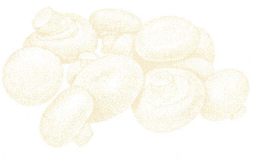

 PIONEER SIGNATURE CUT
PIONEER SIGNATURE CUT 
4 8-ounce Delmonico steaks
2 tablespoons butter
1 cup chopped onions
8 ounces mushrooms, sliced
1 teaspoon Magic Spice
1 teaspoon garlic salt
1 cup Worcestershire sauce
1 cup soy sauce
1 tablespoon red wine vinegar
8 slices provolone cheese
Char-grill steaks to desired doneness. While meat is cooking, melt butter in a large skillet. Add onions, mushrooms, and all spices and liquids to pan. Cook until vegetables are soft and liquid is reduced by a third. Put steaks on plates. Pour ¼ of mushroom mixture over each steak and top with 2 slices of cheese. Place under broiler for 30 seconds to melt cheese. Serve immediately Serves 4.
11324 MOUNT VERNON ROAD
UTICA, OH 43080
740-892-3921
The tradition of making Velvet Ice Cream began in 1914 when Grandpa Joe Dager set sail for America as a fifteen-year-old Lebanese immigrant. Seeking the good life, he found his future in ice cream. His belief in hard work and the dedication involved in creating and maintaining a quality product have been passed down through four subsequent generations of the Dager family. They’ve evolved from making hand-cranked vanilla ice cream to churning out more than 6 million gallons of ice cream per year in more than fifty varieties. What hasn’t changed is the use of the freshest cream and finest ingredients available.
The gristmill on the property is frequently the focus of much attention, since it houses the ice-cream parlor. Built in 1817 by James King, the original mill was destroyed by fire ten years later. After it was rebuilt, another fire roared through the structure in 1865. The third building to rise above the stone foundation was known as McNaughten Mill. Its gray slate roof had the words “Cash for Wheat” and the year “1817” spelled out in black. Milling operations ceased in 1907, and the structure changed hands multiple times.
Bought by Jake and Minnie Spillman in 1930, the property was given the name Ye Olde Mill by its new owners. They put in a miniature golf course and a dance club, where couples paid a dime to dance to the tunes of Kenny Stewart and his orchestra. Ox-roast dinners, at a cost of fifty cents, were another popular event. Rollerskating became popular in 1934. Since the skating took place on the second floor and refreshments were offered on the first, guests became quite good at maneuvering up and down the stairs with their skates still on! Jake Spillman ran a tight ship at the rink, so parents were comfortable in letting their children attend, knowing they were safe and well supervised. Eventually, the activity became so popular that a new rink was built complete with its own electric organ. It was such a destination that skaters dressed up to attend. The girls wore special skating outfits, and the men sported their best white flannel trousers.
The twenty acres encompassing Ye Olde Mill and the home of Velvet Ice Cream are still a picturesque setting full of family fun. Guests can start their visit at the museum, which tells the story of ice cream from Roman times through the present day. Antique ice-cream-making equipment is on display, intermingled with fun facts and historical information. Many visitors to this site choose to take advantage of the picnic area, nature trails, playground, and petting zoo. Some enjoy the shade in the grove of buckeye trees, while others idle in the sun on the banks of the peaceful lake. Always popular is the tour where folks can watch Velvet Ice Cream being made.
Ye Olde Mill is open spring, summer, and fall, with a huge ice-cream festival each year over Memorial Day weekend. In addition, Velvet Ice Cream is available in retail locations throughout Ohio, Indiana, Kentucky, and West Virginia. Along with my neighbor Mona Marple, I enjoyed my visit and my ample Banana Split. Other guests were relishing a meal, munching on sandwiches and salads. It’s a great destination for old-fashioned fun that Karen and her family will be sure to enjoy when they visit.

 GRIST MILLER
GRIST MILLER 
¼ cup first choice of ice-cream topping, divided
1 scoop each of 3 different ice-cream flavors
2 tablespoons second choice of ice-cream topping
2 tablespoons cashews
½ banana
whipped cream
1 tablespoon crushed nuts
1 maraschino cherry
1 pretzel rod
Ladle 2 tablespoons of your first choice of ice-cream topping into the bottom of a soda glass. Spoon 1 scoop of ice cream into glass. Place remaining amount of first topping over ice cream. Continue with second scoop of ice cream. Spoon second choice of topping over ice cream. Add cashews. Add third scoop of ice cream. Cut banana into 5 round wheels and place around the side of the glass. Top with whipped cream, crushed nuts, cherry, and pretzel. Serves 1.
 FEED BIN
FEED BIN 
14 scoops of ice cream (several flavors)
¼ cup chocolate ice-cream topping
¼ cup cherry ice-cream topping
¼ cup marshmallow ice-cream topping
2 bananas, cut into wheels
whipped cream
½ cup crushed nuts
4 maraschino cherries
8 pretzel rods
Spoon 7 ice-cream scoops into each of 2 ice-cream trays. Top ice cream with equal amounts of chocolate, cherry, and marshmallow toppings. Distribute bananas over each tray. Top with whipped cream, nuts, and cherries and garnish with pretzel rods. Serves 4 to 6. Note: Ye Olde Mill serves this by setting trays in a wooden feed bin.

36 EAST STREETSBORO STREET
HUDSON, OH 44236
330-655-2949
I was told that I couldn’t go wrong with the seafood. Since I’d never sampled it, I chose the Opah, which has a flavor and meatiness somewhere between tuna and sea bass. My spice-rubbed variety, served with Saffron Rice and fresh Green Beans, was wonderful. I’d started with Corn Chowder, full of corn right off the cob. What followed was a delightful salad of Bibb lettuce, plums, pecans, and blue cheese, tossed ever so lightly in Balsamic Vinaigrette made on site. For dessert, I was sorely tempted by the Caramelized Plum Napoleon but chose the White and Dark Chocolate Bombe, a creamy Bavarian Mousse coated in a wisp of crisp chocolate. The concoction literally melted in my mouth.
Other diners enjoyed the popular Char-Grilled Trout with Oyster Mushrooms, accompanied by Tasso Ham and Fingerling Potato Hash, and the Beef Tenderloin, served with Cauliflower Gratin and Tomato Pie. The menu at Turner’s Mill changes seasonally to take advantage of nature’s bounty, and the offerings of summer were deliciously present during my visit.
The atmosphere here is subdued and comfortable. I dined on the enclosed porch, where the large windows are treated with grapevines wound sparingly with tiny lights, giving the room a homey touch. There are two other dining rooms on the main floor, one of which is the Fireside Room. The tavern downstairs is every bit as cozy as the upstairs dining rooms. Booths line the massive stone foundation walls, and single white tapers in pewter candlesticks blink atop linen-covered tables, just as they do in the other dining areas.
This large red brick building, listed on the National Register of Historic Places, was built in 1852 by a group of businessmen who started a steam mill to house the Hudson Planing and Lumber Company. Twenty years later, Jacob Miner acquired the structure and refitted it to mill grain.
In 1891, Ernest Fillius took ownership and again changed the product line. In addition to hay and grain, he began to make flour, selling the well-known Perfection, Crown, and Crystal brands. The mill was sold in 1923 but continued operations under the moniker of the Hudson Milling Company.
Charles Turner, the man for whom the restaurant is named, took over in 1933 and continued to make flour. Eventually, his son C. Francis Turner assumed the reins and continued operating the mill until 1969. That legacy and longevity are carried on today by Brad Buchanan, proprietor of The Inn at Turner’s Mill. It’s certainly something of which David Hudson, founder of the town and the great-great-great-granduncle of Francis Turner, could be proud!

 ROAST CHICKEN
ROAST CHICKEN 
3- to 4-pound whole chicken, giblets reserved
4 sprigs rosemary
2 tablespoons wild flower honey
½ cup Dijon mustard
juice and zest of 1 lemon
salt and pepper to taste
½ cup canola oil
1 cup white wine
4 cups chicken stock
2 tablespoons cornstarch
2 tablespoons water
Rinse the chicken cavity. Pat dry. In a blender, combine the next five ingredients. Blend until well combined. With blender running, add oil in a steady stream to emulsify. Place chicken in a large plastic bag and add marinade. Seal top and allow to marinate in refrigerator for 2 to 6 hours.
Preheat oven to 450 degrees. Remove chicken from marinade and wipe off excess. Season with salt and pepper. Truss chicken and place on a rack in a roasting pan along with the giblets. Roast, basting frequently. Allow 20 minutes per pound, cooking to a thigh temperature of 165 degrees. Remove from oven and rest for 15 minutes. Reserve pan drippings for sauce. Heat roasting pan on stovetop. Add wine to deglaze pan. Add chicken stock and reduce until well flavored. In a small container, mix together cornstarch and water. Add slurry to chicken stock in small quantities until desired thickness is reached. Adjust seasonings. If desired, mince giblets and pull meat from neck bones to garnish sauce. Serves 4.
 BAVARIAN MOUSSE
BAVARIAN MOUSSE 
1 sheet gelatin
1 cup water
½ cup chopped white chocolate
½ cup chopped bittersweet chocolate
2 cups heavy cream, divided
cups heavy cream, divided
3 egg yolks
6 tablespoons sugar
Bloom gelatin in water and set aside. Melt white chocolate and bittersweet chocolate separately in double boilers. In a large saucepan, heat 1 cup heavy cream almost to boil. In a bowl, whisk together egg yolks and sugar to ribbon stage. Add hot cream a little at a time and return mixture to saucepan, whisking constantly until a temperature of 185 to 190 degrees is reached. Remove from heat. Squeeze water out of gelatin and add gelatin to saucepan, stirring until completely dissolved. Pour half of mixture into white chocolate and half into dark chocolate. Stir each until combined. Whip remaining cream to soft peaks. Fold half into white chocolate and the other half into dark chocolate. Fill individual molds about halfway with dark chocolate, then fill with white chocolate. Refrigerate to set. Serves 8.